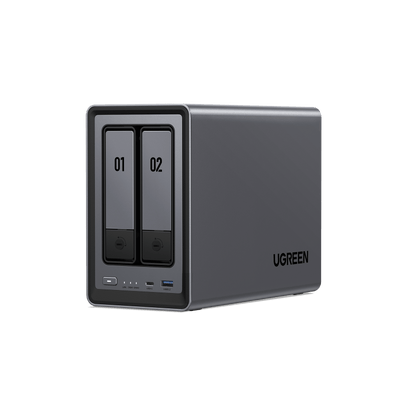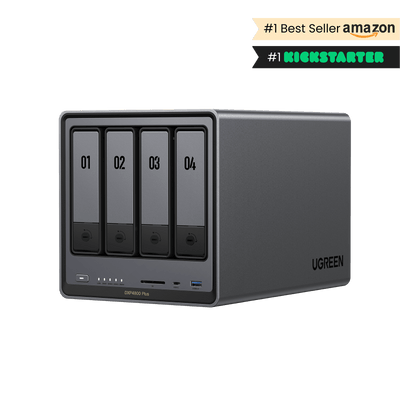Troubleshooting 6 Common NAS Performance Issues
Network Attached Storage (NAS) systems are increasingly becoming essential tools for many, serving everything from home media libraries to enterprise-level business operations. For those unfamiliar with the term, what is NAS refers to a centralized storage solution that connects to your network, allowing multiple users and devices to access, share, and store data efficiently. Yet, even the most robust NAS setup can face performance issues that impact productivity and data accessibility.
For remote work setups, optimizing NAS performance is critical to maintaining fast, secure, and reliable data access across distributed teams. If you’re looking for detailed strategies, check out this guide on Optimizing NAS Performance for Remote Work to ensure your system operates smoothly and meets the demands of modern workflows.
Key Takeaways:
- NAS performance issues stem from three main areas: network limitations (bandwidth/congestion), hardware constraints (RAM/CPU/storage), and software configuration problems.
- Performance optimization requires a multi-faceted approach—addressing network infrastructure, implementing proper hardware upgrades, and maintaining current software/firmware.
- User management and access control significantly impact NAS performance, particularly in multi-user environments where resource contention and file locking can create bottlenecks.
Network-Related Issues
Network performance issues are often the first bottleneck NAS users encounter.
Bandwidth Limitations
When your NAS feels sluggish, bandwidth constraints are often the culprit. You might experience slow file transfers, delayed access to shared folders, or inconsistent streaming performance.
Solutions:
-
For Wired Networks:
- Upgrade to Gigabit Ethernet or faster network infrastructure
- Implement link aggregation for multiple network connections
- Use enterprise-grade switches with sufficient buffer memory (minimum 128 KB per port)
-
For Wi-Fi Networks:
- Avoid wireless connections for performance-critical tasks
- If wireless is necessary, use 5GHz bands to reduce interference
- Position access points strategically for optimal signal strength

Network Congestion
During use, your connection may become unsteady or jumpy – this is what experts call “jitter.” Sometimes, pieces of information (called data packets) get lost. The network also slows down, meaning less information gets through successfully. Sometimes, the connection may fail completely and stop working.
Solutions:
- Implement Quality of Service (QoS) to prioritize NAS traffic
- Schedule bandwidth-intensive tasks during off-peak hours
- Monitor and limit “bandwidth hogs” such as video streaming or large file transfers
Slow Network Protocols and Equipment
Outdated hardware and protocols can create significant bottlenecks in your NAS setup. Watch for these indicators:
- Consistent poor performance across all devices
- Network errors in system logs
- Increasing packet retransmission rates
Solutions:
- Replace outdated switches and routers
- Update to modern network protocols (SMB3, NFS4)
- Ensure all network components support Gigabit speeds or higher.
Hardware-Related Issues
Your NAS might have the latest firmware and a perfect network connection, but hardware limitations can still bring your system to a crawl. Let’s dive into these critical hardware bottlenecks and their solutions.
Insufficient RAM
Your NAS (Network Attached Storage) can show clear warning signs when its RAM is reaching its limits. You might first notice that the storage system becomes very slow when trying to transfer multiple files at the same time. Another sign is that the NAS performance decreases when multiple users access it simultaneously. Lastly, you may find that frequently accessed files take longer to open than they should, even though the NAS typically keeps these common files cached for faster access.
Solutions:
- Upgrade RAM if your NAS supports expansion
- Implement SSD caching to offset RAM limitations
- Limit concurrent users or processes to manage memory usage

CPU Performance
Processor power can be a significant bottleneck in everyday use. You might notice this limitation especially during common tasks like converting videos for streaming to your devices, a process known as transcoding. The strain becomes even more apparent when several family members or coworkers try to use the NAS at the same time. The processor also shows its limitations during security-related tasks, particularly when it needs to encrypt files to keep them secure or decrypt them for viewing. These demanding operations can push a NAS device’s processor to its limits, potentially causing slower performance or delays in response time.
Solutions:
- Schedule resource-intensive tasks during off-peak hours
- Utilize hardware transcoding capabilities where available
- Consider upgrading to a more powerful NAS model for demanding workloads, Examples include the UGREEN NAS storage DXP4800 plus with a 12th generation 5-core Intel® processor.
{{UGPRODUCT}}
Remember: Hardware limitations often work in concert - addressing just one component might not solve all performance issues. Consider a holistic approach to hardware upgrades and optimization. When it comes to hardware configuration, UGREEN NAS storage is definitely the right choice for you!
Disk and Storage Issues
Your NAS’s storage system is its heart – when disk and storage issues arise, they can threaten both your data’s safety and your system’s performance.
Disk Failures and Failing Drives
Storage drives might give off unusual clicking or grinding sounds when they’re starting to fail. Your system will also leave clues in its logs, showing more errors than usual when reading or writing data. You might notice that it takes longer than normal to open or save files, which is another red flag.
Solutions:
- Enable and monitor SMART attributes regularly
- Set up email alerts for drive health issues
- Implement automated health checks
- Maintain current backups of critical data
- Keep spare drives on hand for immediate replacement
- Follow proper hot-swap procedures
- Document the drive replacement process
- Verify RAID rebuild completion
Disk Array Management
The number of disks you use plays a crucial role in its overall performance and reliability. Think of it like a highway system - having too few lanes can create traffic jams, and similarly, having too few disks can slow down how quickly your system can read and write data. Additionally, a limited number of disks restricts your backup options, making it harder to protect your data against drive failures.
Solutions:
- Add drives to existing arrays when possible
- Implement storage pools for flexibility
- Consider SSD cache to boost performance
- Plan capacity upgrades proactively
Pro Tip: Remember that storage issues often cascade - a single failing drive can impact entire array performance, and poor RAID choices can affect both reliability and speed. Regular monitoring and maintenance are your best defense against storage-related problems. Click to read more: What Drives Should I Use for a NAS?
Software and Configuration Problems
Even with perfect hardware, software issues and misconfigurations can severely impact your NAS performance.
Outdated Firmware and Software
Software updates serve multiple important purposes that help keep your system running smoothly and safely. These updates also fine-tune your system’s performance, helping it run faster and more efficiently. As a bonus, updates often bring exciting new features that can make your system more useful and easier to use. Perhaps most importantly, they fix annoying bugs and improve overall stability, reducing crashes and other frustrating problems that might interrupt your work.
Safe Update Procedures:
- Never interrupt the update process
- Monitor for error messages
- Keep power supply stable
- Follow manufacturer guidelines
Common Misconfigurations
Your network settings determine how your system connects and communicates with other devices, while share permissions control who can access what files - think of these as the locks and keys to your digital doors. The way your system’s services start up and how it handles temporary data storage through cache settings also play crucial roles in its operation. When these settings aren’t properly configured, the consequences can be serious and wide-ranging. Your system might slow to a crawl, or worse, leave your data vulnerable to unauthorized access. Users might struggle to reach their files, and the entire system could become unstable, leading to crashes and disruptions.
Solutions:
- Document all configuration changes
- Implement change control procedures
- Regularly back up configurations
- Periodically review configurations
Performance Bottlenecks
Metadata Bottlenecks in NFS
NFS metadata operations can create significant performance bottlenecks in your NAS system, especially when dealing with large numbers of small files. When multiple users or applications frequently access files, the metadata server can become overwhelmed with requests for file attributes, permissions, and location information, leading to system-wide slowdowns and reduced responsiveness.
Solutions:
- Implement parallel NFS (pNFS) to separate metadata and data paths
- Configure metadata caching at both server and client levels
- Use SSD storage for metadata operations
- Enable directory name lookup cache (DNLC)
- Optimize file system layout to reduce metadata operations
- Implement automated metadata cleanup routines
Cluster Node Communication Issues
In scale-out NAS environments, poor communication between cluster nodes can create severe performance issues. When nodes struggle to maintain synchronization or experience network latency, it can lead to delayed data access, inconsistent file states, and reduced overall system performance, particularly in multi-user environments.
Solutions:
- Deploy dedicated high-speed interconnects between nodes
- Implement efficient load balancing algorithms
- Configure proper failover mechanisms
- Optimize cluster network settings
- Monitor and tune inter-node communication parameters
- Use dedicated networks for cluster communication
Encryption Overhead
While encryption is crucial for data security, it can introduce significant performance overhead in NAS operations. The additional processing required for encryption and decryption can impact file transfer speeds, increase CPU usage, and create bottlenecks in high-throughput environments.
Solutions:
- Utilize hardware-based encryption acceleration
- Implement selective encryption for sensitive data only
- Configure optimal encryption block sizes
- Use efficient encryption algorithms
- Enable compression before encryption
- Implement caching for frequently accessed encrypted data
- Balance security requirements with performance needs
Managing the Human Factor
User and Access-Related Issues
When multiple users simultaneously access your NAS system, it can create significant performance bottlenecks. Heavy concurrent access can overwhelm system resources, leading to slow response times, failed file operations, and frustrated users. This is particularly noticeable during peak work hours or when large teams are collaborating on shared projects.
Solutions:
- Implement user access scheduling for resource-intensive tasks
- Set up user quotas to prevent resource monopolization
- Configure bandwidth throttling for large file transfers
- Use load balancing across multiple network interfaces
- Enable caching mechanisms for frequently accessed files
- Implement Quality of Service (QoS) policies
- Monitor and log user access patterns for optimization
File Locking Problems
File locking issues occur when multiple users or applications attempt to access the same files simultaneously. This can result in stuck locks, preventing file access, corrupted files, and system-wide performance degradation. Rogue clients or crashed applications can leave files perpetually locked, causing workflow disruptions.
Solutions:
- Configure automatic lock breaking after timeout periods
- Implement proper file locking protocols (opportunistic vs. mandatory)
- Set up monitoring for stuck locks and orphaned processes
- Create automated scripts to identify and clear stuck locks
- Educate users about proper file sharing practices
- Use file system features that support concurrent access
- Implement version control systems for collaborative work
VM Resource Monopolization
In virtualized environments, certain VMs can become “noisy neighbors,” consuming disproportionate amounts of NAS resources. This can lead to performance degradation for other VMs, unpredictable storage performance, and reduced overall system efficiency.
Solutions:
- Implement storage I/O control (SIOC) policies
- Set up resource pools with defined limits
- Use storage QoS to prevent resource hogging
- Monitor VM performance metrics regularly
- Configure appropriate VM storage policies
- Implement storage DRS for balanced resource usage
- Use separate storage volumes for high-demand VMs
Final Thoughts
Your NAS system is a critical component of your infrastructure – treat it accordingly with regular attention and care, and it will serve you well for years to come.




